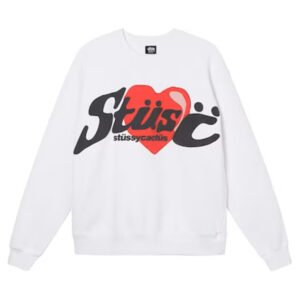This article will dive deep into the fusion of art and fashion within Comme des Garçons, exploring how Kawakubo’s designs transcend traditional clothing to enter the realm of art.
The Avant-Garde Vision of Rei Kawakubo
Rei Kawakubo is no ordinary designer. Her approach to fashion is a direct challenge to the status quo, consistently pushing the boundaries of what clothing should be. For Kawakubo, the function of fashion is not limited to making the wearer look good or conform to societal standards. Instead, she uses her pieces as a form of personal expression and rebellion. Much of her work questions the very definition of beauty, creating pieces that seem deconstructed, asymmetrical, or even intentionally “ugly.”
Kawakubo’s vision has always been avant-garde, focusing more on emotion and artistic representation than commercial success. Her collections are like exhibitions in themselves, often resembling performance art, sculptures, or installations. Pieces from cdg converse collections can look like oversized jackets with impossible proportions or dresses made of unconventional materials, such as plastic or wire. These aren’t clothes designed solely for wearability, but for provoking thought—much like how a work of art would challenge a viewer’s perception.
Fashion as a Medium for Artistic Expression
The idea that fashion can be more than just functional clothing is not new, but Comme des Garçons takes it to a new level. Fashion, in Kawakubo’s hands, becomes a medium of artistic expression, comparable to painting, sculpture, or installation art. For instance, her 1997 collection titled “Body Meets Dress, Dress Meets Body” is a powerful example of this. In this collection, Kawakubo used padding to distort the shape of the body, challenging conventional ideas of beauty, proportion, and even femininity.
This specific collection was more than just a runway presentation—it was a commentary on how fashion molds and manipulates the human body. Much like how an artist molds clay into a sculpture, Kawakubo reshaped the human form using fabric, padding, and creative design techniques. As a result, the collection didn’t just serve to adorn the body but to make a statement, further blurring the lines between art and fashion.
Conceptual Design and the Role of Art in Comme des Garçons
A large part of what separates Comme des Garçons from other fashion brands is its conceptual design approach. While most fashion houses focus on trends, wearability, and seasonal demand, Kawakubo takes an entirely different route. Her collections are not meant to cater to current trends but to question them. This is where her designs transcend the world of fashion and enter the realm of conceptual art.
In the same way that conceptual artists prioritize ideas over aesthetic beauty, Comme des Garçons pieces often emphasize abstract concepts over traditional design. For instance, Kawakubo’s work frequently questions gender norms, body image, and the idea of wearability itself. Her pieces can feel more like wearable sculptures, meant to provoke thought rather than to blend into everyday life.
For Kawakubo, the process of designing clothes is similar to an artist’s process in creating a work of art. There is experimentation, the use of unconventional materials, and the intent to communicate something deeper than what is immediately visible. Comme des Garçons garments are not designed for mass-market appeal but for those who appreciate the artistry and conceptual depth behind each piece.
Art in Fashion Shows: Comme des Garçons Runway as Performance
If there is any place where Comme des Garçons truly blurs the lines between art and fashion, it’s on the runway. Kawakubo’s fashion shows have often been compared to performance art. Models don’t just walk the runway; they become part of a larger artistic statement, with each outfit contributing to a broader theme or narrative.
For instance, her Fall/Winter 2015 collection, titled “Ceremony of Separation,” explored themes of life and death, with models dressed in black and white ensembles that felt like abstract representations of mourning. The clothes in this show were not just fashion but an exploration of human emotions, death rituals, and cultural perceptions of loss. The runway became a space for both artistic and emotional expression, similar to how a gallery might display a powerful installation or video art piece.
Much like a carefully curated art exhibition, Kawakubo’s runway presentations invite interpretation and analysis. Every detail, from the models’ makeup to the music and lighting, is carefully orchestrated to evoke a certain mood, making her shows more akin to performance art than traditional fashion presentations.
The Comme des Garçons Legacy in Fashion and Art
The influence of Comme des Garçons on both fashion and art is undeniable. Over the years, Rei Kawakubo has been lauded not only for her fashion achievements but also for her contributions to the world of contemporary art. In 2017, the Metropolitan Museum of Art in New York held an exhibition titled “Rei Kawakubo/Comme des Garçons: Art of the In-Between,” which was a retrospective of her work. This exhibition blurred the boundaries between art and fashion, presenting Kawakubo’s designs as pieces of art rather than simply clothing.
The exhibition highlighted how Kawakubo’s work has always existed in the “in-between”—between fashion and art, wearability and sculpture, beauty and discomfort. This retrospective was a recognition of her work as a form of contemporary art, solidifying her place not just in fashion history but in the broader cultural conversation about what constitutes art.
The Wearability Debate: Can Art Be Worn?
One of the biggest debates when it comes to Comme des Garçons is the question of wearability. Some critics argue that Kawakubo’s pieces are too abstract, too conceptual, or too impractical to be considered “fashion” in the traditional sense. They ask, can something be considered fashion if it’s not wearable?
This debate echoes larger questions in the art world, where the value of a piece is often weighed against its functionality. In the case of Comme des Garçons, Kawakubo challenges the notion that fashion must be wearable to be valuable. Instead, her pieces function more as art installations—designed to evoke thought, emotion, and introspection. Whether or not these pieces are practical to wear is almost irrelevant in Kawakubo’s world. Much like how a painting is admired for its message or beauty rather than its functionality, Comme des Garçons pieces are appreciated for their artistry and conceptual depth.
Conclusion: The Intersection of Art and Fashion in Comme des Garçons
The question of whether Comme des Garçons pieces can be both art and fashion doesn’t have a simple answer. In many ways, Rei Kawakubo’s work transcends the traditional boundaries of both fields, existing in a space that is both and neither. Her designs are wearable in some cases, but their primary function is to challenge perceptions and provoke thought, much like a work of art.
Ultimately, the label represents the intersection of art and fashion, where the two forms of expression meet and enhance each other. Comme des Garçons has redefined fashion, not just as a commercial industry but as an art form in its own right. And in doing so, it has forever blurred the lines between what we wear and what we admire as art.


